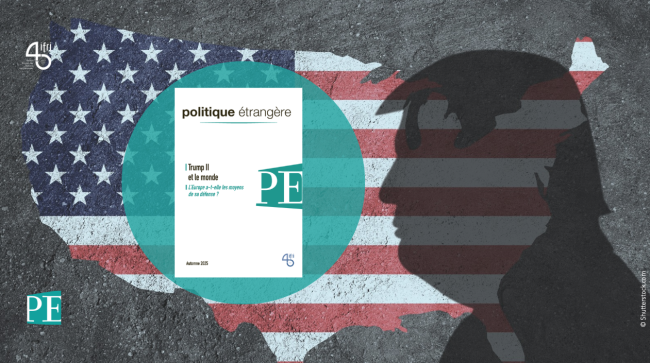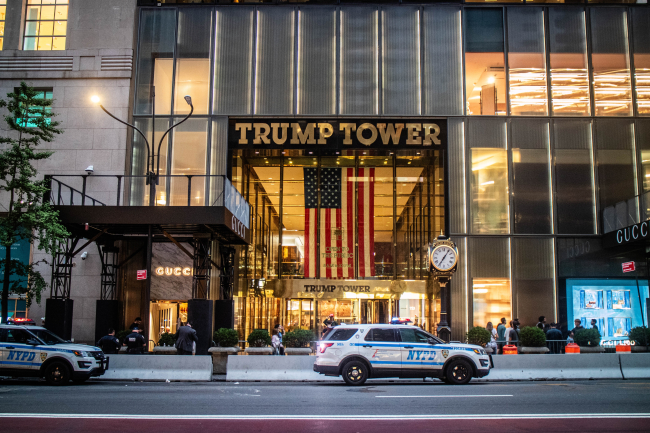The Difficult Issue of College Rape in America

Cette Actuelle est la quatrième d'une série de quatre Chroniques américaines sur l'éducation aux Etats-Unis, publiées cette semaine.
In 2014, a White House report released finalized data from the National Institute of Justice about on-campus sexual assaults. In the report, data indicated that nearly one in five college-age (18-22 years old) women have experienced an instance of rape, either forcibly, under the influence of drugs or alcohol, or through the abuse of authority. [1] Though this number has engendered some debate over the exact definition of ‘rape,’ and prompted some skepticism over the staggeringly high number, it is nonetheless apparent that the issue of sexual assault at American universities is a pressing one. In the wake of these numbers and amidst rising reports of large numbers of top-tier universities mishandling rape cases, the Obama administration and the Department of Education launched investigations into 55 universities over purported violations of Title IX, a part of The Education Amendments of 1972 which requires gender equity in educational programs. Since May 2014, the number of universities under investigation has grown to 67. [2]
Title IX
Title IX prohibits any form of discrimination with regards to gender as it relates to the participation in or benefits of education. Title IX specifically applies to any universities receiving federal financial assistance, which is nearly all of them; any violation of this code can result in partial or total loss of federal funding. The law’s equality clause applies to athletic and academic opportunities, but has also been used to justify and dictate strict federal standards for the manner in which colleges and universities handle cases of sexual harassment or assault, in defense of an environment welcoming to both genders. A “Dear Colleague” letter, a type of non-binding legislative communication, released in 2011 by the Department of Education explicitly states that “Sexual harassment of students […] is a form of sex discrimination prohibited by Title IX.” The letter then outlines the policy requirements pertaining to sexual harassment and assault that an educational institution must follow in order to maintain a non-hostile campus and remain in compliance with Title IX. This letter, since designated by the federal government as a “significant guidance document,” has formed the basis for legal complaints – typically submitted by or on behalf of victims of assault – filed with the Department of Education against universities. [3]
Importantly, the Dear Colleague letter establishes a different standard of evidence for university investigations into sexual assault than the one required by regular law enforcement. Under American law, there are several different standards of evidence, each related to the burden of proof within a legal proceeding. For example, civil (non-criminal) cases in America are decided by a “preponderance of the evidence” standard, which means only that the evidence provided makes it more likely than not that the alleged malfeasance occurred. In contrast, “clear and convincing evidence,” a higher standard, is required for more serious cases, such as for a prisoner’s motion to stay a death penalty, and was formerly the standard colleges used for sexual harassment cases. The highest burden of proof standard under American law, “beyond reasonable doubt,” is legally mandated in all criminal cases, like those involving sexual assault. The 2011 Dear Colleague letter establishes that colleges, unlike the justice system, are required to use a simple “preponderance of the evidence” standard in determining guilt, meaning that even if a victim is unable to prove criminal charges against the student, he or she may still pursue school penalties in addition to civil damages against his or her attacker. Additionally, schools are required to investigate every claim of sexual assault or harassment, irrespective of whether the claims are being investigated by law enforcement, and to complete every investigation within 90 days. [4]
Investigations
Reports of egregious mishandling of rape cases over the course of the past decade by a host of universities has caused a recent public uproar and helped to trigger the Department of Education’s investigations. Colleges, seeking to avoid the negative effects on their rankings related to expelling students and reporting sexual assaults, have been documented discouraging victims from pursuing legal or disciplinary hearings against their rapists, engaging in victim blaming, and failing to appropriately respond even when the perpetrators are found guilty. At Hanover College in Indiana, a student was forced to sign a statement that she would not press criminal charges against her alleged attacker, and was subsequently forced out of on-campus housing. After her attacker was held not responsible, the student was reprimanded for speaking out further. [5] At Occidental College in California, a rapist who was found guilty was given a one-year suspension and allowed to return after writing a five-page book report, even after two additional women came forward claiming that he had sexually assaulted them. [6] In several incidents at Connecticut-based Yale University, the university’s judicial board gave written reprimands to student rapists rather than removing them from campus. [7] In another instance at Yale, due to a hearing being scheduled at the end of the semester, a rapist’s suspension lasted less than two days before he was allowed to return for summer classes. [8] Each of these schools is now the subject of a Title IX investigation.
In all but nine of the fifty-five original cases, investigations are a result of direct complaints, such as the ones above, from students and alumni that the schools in question violated Title IX in their handling of sexual assault allegations. The other nine schools were selected for ‘compliance reviews’ based on statistical data, news reports, and information from parents and advocacy organizations indicating that they may be in violation of the statute. One investigation has already been completed, and found Boston-based Tufts University in noncompliance with Title IX. The Department of Education and the US Congress are currently considering options: in the past, universities have agreed to “resolution agreements,” necessitating policy changes and administrative oversight, to reaffirm compliance with Title IX. The Department of Education’s Office of Civil Rights, responsible for conducting the investigations, has the power to strip federal funding, but has never done so.[9] However, fears of university complacency due to the historical lack of consequences for noncompliance have prompted a group of US Senators to consider endorsing sanctions for the universities in question. [10] One Senator likened sanction-free resolution agreements to “the ’slap on the wrist’ book report for student rapists.” [11] In the current climate of reform, where the government is seeking effective penalties for noncompliant institutions, it is possible, though unlikely, that Tufts or another university will be the first educational institution in history to lose federal funding as a result of Title IX.
The Concept of “Rape Culture”
America’s problems with sexual assault are not limited to college campuses: similar issues in the US military have been the subject of extensive congressional inquiries, and there is a more generalized view of many feminists and scholars that America suffers from a systematic acceptance of sexual misconduct, leading these same scholars to label American society a “Rape Culture.” Rape Cultures are defined as societies in which rape, sexual violence, and sexually-motivated physical dominance are normalized, widespread, and validated. According to American feminists and academics, American culture has exhibited a pervasive trend of excusing or even glorifying acts of sexual violence, portraying it as either the inevitable consequence of natural human sexuality, or the fault of the victim. [12] Commonly cited examples of rape culture include the prevalence of rape jokes in common conversation, the frequent usage of sexist jokes and misogynistic humor under the protection of ‘comedic license,’ the cultural importance placed on men’s sexual activity, and popular attitudes toward rape victims which leverage their clothing choices or sexual history in defense of their rapists. [13]
Indeed, the systematic assault on the credibility and claims of women who come forward to allege sexual harassment leads to cultural misconceptions like the idea that false allegations comprise over 50% [14] of rape reports, whereas methodological, academic surveys indicate that the proportion is lower than 5%. [15] This misconception leads to hostility to victims for coming forward, even from people like detectives who are meant to investigate the crime. This hostility and disbelief can lead to the recanting of victim testimony in the interest of recovery, rather than justice; each instance of the recanting of testimony or failing to legally pursue claims of sexual assault is qualified by law enforcement as a ‘false rape allegation,’ only furthering the problem. [16] One of the results of this ingrained cultural hostility is that, according to the Justice Department, at least 60% of rapes go unreported, and only 3% of rapists – including from unreported cases – will serve even a day in jail. [17]
This kind of rape culture pervades American universities at every level – in jokes made by students, in the binge drinking, party-based “hook-up culture” centered on casual sex (usually while one or both parties are inebriated), and in the victim-shaming and rapist-defending that can occur in the school community. Fraternities – college social clubs for men – are frequently cited as a source of the binge drinking, male-dominated culture which can engender sexual violence (women have their own clubs, called sororities). However, it is important to note that these problems are neither limited to nor intrinsic to fraternities, but are rather a broader societal issue. The latter attitudes of victim-shaming and rape-defending even color the administrative inquiries into rape allegations – purported victims are frequently questioned about clothing choices, sexual history, and their inebriation on the night of the alleged assault, and in rape cases both within and outside of universities victims are often entreated to take into account the effects that their allegations could have on the successful futures of their rapists. Changing America’s rape culture means reducing everyday misogyny, increasing support and eliminating hostility for victims – both administratively and within the broader culture – and improving efforts to educate on consent and the definition of rape.
Changing a Culture
For colleges to achieve Title IX compliance, they must only conform to the necessary standards laid out for them by the Department of Education. Though these minimum standards help victims to pursue justice against their attackers, and give greater assurance that rapists will be punished either judicially or administratively, they do little to change the cultural problems which lead to the current preponderance of rape. Even voluntarily harsher penalties for rapists, such as presumptive expulsion upon conviction, carry with them a host of problems and still fail to address the root of the problem. [18] As one way of addressing some of the problems brought about by presumptively harsh penalties, it has been suggested that victims be given some degree of control over the severity of their attacker’s punishment – since students frequently know their rapists, some academics fear victims would be less likely to come forward if they feel the presumptive punishment was too harsh. In addition to encouraging higher rates of reporting, giving victims this level of discretion could help on the road to recovery. [19]
A large number of suggestions have been made by government officials, feminist pundits, and academics for ways to reduce the incidence of sexual assault and to more broadly change the way students and other Americans pursue sexual relationships. Bystander intervention training, wherein students are trained to recognize and intervene in situations of potential alcohol-related sexual assault, has proven to be an effective method of reducing campus rape. Other social efforts, such as the movement towards ‘enthusiastic consent,’ [20] move away from the formerly popular phrase ‘no means no’ which, some argue, can result in women who are too shy or otherwise uncomfortable to reject a man – especially when the man is persistent or the woman feels unsafe – engaging in sexual relations they would rather not. Instead, the movement argues, sexual partners should seek an “enthusiastic yes,” rather than just the absence of a definitive no – especially since the effects of alcohol can sometimes blur the lines between a no and a yes, and can cause potential victims to give in more easily to pressure. [21] Encouraging this type of policy for universities, some feminists say, has benefits for both parties involved, as it also helps to eliminate so-called ‘grey rape,’ when the situation and guilt are not clear-cut, and the victim-blaming or sex-shaming that come with it. [22]
In Conclusion
Rape on college campuses, and within American culture in general, is far too prevalent. In the opinion of the US Federal Government and feminist advocates, universities do not adequately address the problem of sexual violence. Rather than being uniquely an example of the failings of universities, this is the symptom of a broader cultural problem within America. Though defining a culture as rape-friendly is a harsh indictment of its values, many modern analysts, pundits, and feminists have already done so. Instead of arguing over the semantics of the cultural problems present in the country and its schools, Americans should work towards fixing the cultural and systemic issues at hand. Given the formative nature of the four years, young people spend at college, President Obama’s Title IX investigations and anti-rape initiative to combat the culture of hostility and sexual violence on college campuses is a good place to start.
Thanks to Heidi Kahle of Rice University for her insight and aid.
[1] http://www.whitehouse.gov/sites/default/files/docs/sexual_assault_report_1-21-14.pdf
[2] http://college.usatoday.com/2014/07/03/dept-of-ed-now-investigating-67-colleges-for-their-handling-of-sexual-abuse-allegations/
[3] http://www2.ed.gov/about/offices/list/ocr/letters/colleague-201104_pg2.html
[4] http://chronicle.com/article/Education-Dept-Issues-New/127004/
[5] http://aattp.org/indiana-college-student-reports-being-raped-school-reacts-by-accusing-her-of-harassment/
[6] http://www.bloomberg.com/news/2013-06-13/college-serial-rapists-evade-antiquated-campus-responses.html
[7] http://swampland.time.com/2013/08/05/as-students-prepare-to-return-yale-faces-new-scrutiny-for-rape-policy/
[8] http://www.huffingtonpost.com/2013/08/23/yale-sexual-assault-punishment_n_3786885.html
[9] http://www.huffingtonpost.com/2014/05/02/education-department-compliance-reviews-title-ix_n_5254075.html
[10] http://www.universityherald.com/articles/10166/20140630/group-of-u-s-senators-discuss-nuclear-option-for-punishing-schools-that-mishandle-reports-of-sexual-assault.htm
[11] Ibid
[12] http://upsettingrapeculture.com/rapeculture.php
[13] http://time.com/40110/rape-culture-is-real/
[14] http://www.avoiceformen.com/mens-rights/false-rape-culture/flooded-by-false-rape-allegations/
[15] http://www.ndaa.org/pdf/the_voice_vol_3_no_1_2009.pdf
[16] http://freethoughtblogs.com/almostdiamonds/2013/08/23/i-am-a-false-rape-allegation-statistic/
[17] https://www.rainn.org/get-information/statistics/reporting-rates
[18] http://www.theatlantic.com/national/archive/2013/08/how-to-encourage-more-college-sexual-assault-victims-to-speak-up/278972/
[19] Ibid
[20] http://www.yesmeansyes.com/consent-0
[21] http://www.doctornerdlove.com/2013/03/enthusiastic-consent/
[22] http://campus.feministing.com/2010/10/27/on-the-critical-hotness-of-enthusiastic-consent/

Available in:
Regions and themes
Share
Related centers and programs
Discover our other research centers and programsFind out more
Discover all our analysesBrazil One Year Away from the October 2026 General Elections
Brazil’s general elections will be held on October 4, 2026, to elect the president, vice-president, members of the National Congress, governors, deputy governors and state legislative assemblies. For the presidential and gubernatorial elections, a second round will be held on October 25 if no candidate obtains a majority of the votes in the first round.
Trump II: The Clash of Ideologies
The second Trump administration brings together a number of very different, even opposing, ideologies: far-right populism, the reactionary Christian right, paleolibertarianism, and technolibertarianism. The most visible measures taken since Donald Trump's return to the White House have been populist in nature, with the president's authority strengthened, checks and balances weakened, a form of identity politics embraced, and economic nationalism implemented.
Water in Mexico: an Emergency that Will Wait
Access to water is already and will become increasingly problematic for Mexican economic actors due to the progressive scarcity of the resource resulting from climate change, a geographical distribution that does not coincide with that of the population or economic activity, and management that has so far been far too lax.
Donald Trump v. the States: the Case of New York
While the disruptive policies of the second Trump administration are being implemented at the federal level and on the international stage, they are also being felt in the federal states and major cities across the country. In the spring of 2025, several cases involving the state and city of New York demonstrate that the president’s attacks on environmental protection, the separation of powers, freedom of speech, etc., are also being carried out at the local level.









